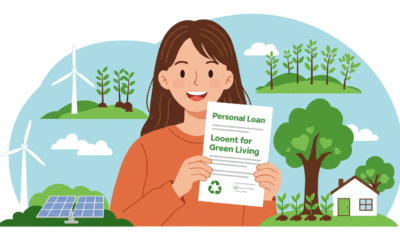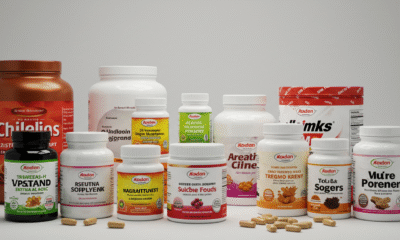

Features
6 Eco-Friendly Clothing Mistakes Consumers that Cause Acne
More people than ever are investing in sustainable clothing to lower their carbon footprint. The market for sustainable clothing is projected to be worth $7.57 billion by the end of this year and is growing over 9% a year.
The benefits of sustainable clothing are very clear. They rely on renewable materials and manufacturing processes that have a lower carbon footprint. However, some people run into problems when wearing sustainable clothing.
One of the issues that some people face with eco-friendly clothing is that they are more prone to developing acne. Part of the issue is that some eco-friendly clothes are made from materials that don’t breathe well. Some eco-friendly consumers also don’t wash their clothes, because they don’t want to use energy or release harmful detergents into the ecosystem.
Nevertheless, it is important to avoid these issues. You can fortunately minimize the risk of acne while still wearing eco-friendly clothes to protect the planet.
Mistakes Eco-Friendly Consumers Make When Wearing Sustainable Clothing
Back acne is more unnoticeable than face acne. However, people can easily notice the red blemishes on your back if you wear backless tops or dresses. Unfortunately, eco-friendly consumers may be more prone to having this problem.
Several reasons can cause back acne from hormones, hygiene practices, or clothes. You may still face these problems when you are wearing eco-friendly clothes. Today, let’s focus on how you can get these skin blemishes without having to stop wearing sustainable clothes.
- You wear eco-friendly clothes with unbreathable fabrics.
Body con, athleisure clothes, and other clothes that are made of unbreathable fabric is a contributor to back acne. The tight, unbreathable fabric traps dirt and sweat, clogging your pores. It is best to use loose-fitting clothes to let your skin breathe, especially for workout clothes.
The good news is that there are some eco-friendly fabrics that are still very breathable. Linen and hemp are both very breathable and good for the environment.
- Wearing sweaty gym clothes and letting them dry out.
Some people are more likely to avoid washing their clothes when they are worried about the environment. National Geographic reports that doing your laundry accounts for roughly 8% of the average household’s greenhouse emissions. Many people also avoid doing the laundry as much, because they don’t want to have those detergents harming the planet.
Nevertheless, it is important to practice good gym hygiene to reduce the chance of having back acne. Sweaty athleisure clothes can be the culprit of your back acne. Besides changing your clothes immediately after a workout, showering as soon as possible removes the dirt and sebum that sits on your skin.
Do not forget to wash your gym clothes as soon as possible to avoid odor-causing bacteria from growing.
If you want to protect the planet, you will find eco-friendly ways to do your laundry. You can take a look at our list of eco-friendly cleaning products for more insights.
- Harsh components are found in your laundry detergent.
Have you ever considered the laundry detergent you are using? According to dermatologist, scented laundry detergents can aggravate the skin. If you tend to rely on laundry services, ask them what laundry detergent they use. Meanwhile, use fragrance-free and bleach-free laundry detergent if you do laundry at home to avoid skin irritation. The good news is that these detergents also tend to be better for the planet, so it is a win-win!
- The bra straps are too tight.
Some seriously eco-friendly consumers want to go the extra mile and buy tighter clothes that use less material. This is a terrible idea, because it does little to reduce the amount of nonrenewable resources you use. You cause yourself to suffer without offering any real benefit for the planet. This includes women that wear bras that are too small to help the planet. There is no sense suffering this much without any real environmental benefit.
The same with wearing loose-fitted clothes; your bras should also be freeing and not restrictive. Do not put on your bra straps too tight. Anything that rubs your skin can cause irritation and potential acne on your back and shoulder. You have to loosen your bra for a bit. Let it breathe.
- You do not wash your bra often.
You might be embarrassed to include your bra in the dirty laundry you are about to send for laundry delivery. You may also avoid washing it as much, because you want to help the planet by reducing the energy and chemicals used for the laundry.
Hence, you need to wash your bra at home, making you forget to wash it often. Not washing it often can cause breakouts as bras trap dirt, grime, and oil. Clean your bra on a regular basis. You can use eco-friendly cleaning products.
- Keep bedding clean as much as your clothing.
This may not be a clothing mistake, but it is as important as cleaning them to prevent back acne. Even when you wash your clothes, you can still have back acne if your bedsheets are unwashed.
Sweat, sebum, and dirt accumulate on your bedding. Wash them weekly if you are prone to acne or if you sleep with your back exposed.
Protect the Planet Without Dealing with Painful Acne
Some eco-conscious customers make clothing decisions that lead to difficult acne problems. You do not have to worry much about back acne. It is perfectly possible to wear eco-friendly clothing without having this problem. Fortunately, it is also a treatable and preventable condition.
Most people can get relief by preventing themselves from making these clothing mistakes and using at-home treatments. However, some can also experience progressing back acne even when carefully following these tips. If this is your case, booking an appointment with your dermatologist is best.


 Environment10 months ago
Environment10 months agoAre Polymer Banknotes: an Eco-Friendly Trend or a Groundswell?

 Environment11 months ago
Environment11 months agoEco-Friendly Home Improvements: Top 7 Upgrades for 2025

 Features9 months ago
Features9 months agoEco-Friendly Cryptocurrencies: Sustainable Investment Choices

 Features10 months ago
Features10 months agoEco-Friendly Crypto Traders Must Find the Right Exchange




























